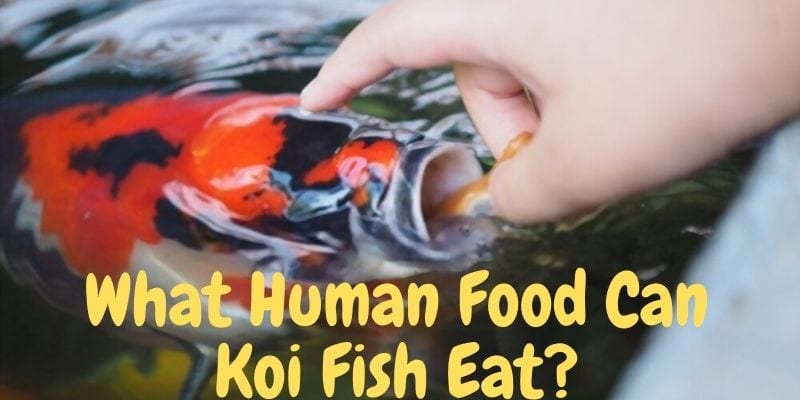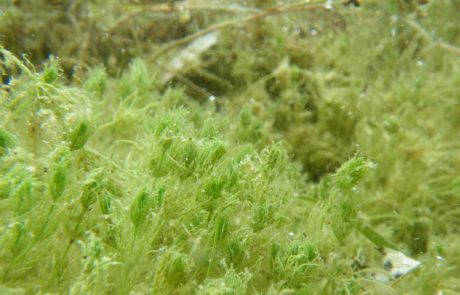What Human Foods Can Koi Fish Eat? The Complete GuideKoi fish are a popular and beautiful addition to backyard ponds and water gardens These colorful fish originate from Japan and can live up to 50 years with proper care! Many koi keepers enjoy interacting with their pets by hand-feeding them treats. This leads to the common question – what human foods can koi fish eat?
Koi are omnivorous, meaning they eat both plant and animal matter In the wild, koi feed on a diverse diet including algae, insects, crustaceans, and other small aquatic creatures They have a physiology suited for digesting this variety of foods. As pets, koi benefit from a diverse diet including commercial koi pellets as well as human foods.
Offering human foods as treats provides enrichment. It also allows koi keepers to bond with their fish. However, koi have specific nutritional needs. Feeding inappropriate or spoiled foods can cause serious health issues. So what human foods are safe for koi fish?
Fruits and Vegetables for Koi FishMany human fruits and vegetables provide excellent nutrition for koi. They offer vitamins, minerals and fiber with low risk. Here are some top fruits and veggies for koi fish treats
Watermelon – This juicy summer treat is a koi favorite. Watermelon contains vitamin A, vitamin C, and potassium. It has high water content to keep koi well hydrated. Remove all seeds before feeding as they can cause intestinal blockages.
Spinach – This leafy green vegetable packs nutrients including iron, calcium, and vitamins K, A, and C. It has a soft texture that koi can easily eat. Feed raw spinach leaves rinsed of any pesticides.
Peas – Fresh or frozen peas provide protein, fiber, and phytonutrients. Cook peas thoroughly until soft and remove the outer shell before feeding koi. Peas expand in water, helping koi feel full.
Sweet Potatoes – Cooked, de-skinned sweet potato slices offer beta carotene, potassium, and fiber. The soft orange flesh is packed with nutrition koi love. Avoid raw sweet potatoes, which are difficult for koi to digest.
Zucchini – This summer squash provides vitamin C, manganese, and antioxidants. Slice or grate raw zucchini into tiny pieces before feeding to prevent choking hazards. Leave the skin on for added nutritional value.
Lettuce – Romaine, green leaf, and other lettuces provide hydration and crunch. Feed raw, rinsed leaves in moderation due to their low nutritional value. Remove thick stems and veins, which are hard to digest. Variety is important, so rotate lettuce with more nutrient-dense veggies.
Fruits like melon, mango, and berries can also be fed to koi in moderation. Remove all seeds, pits, and rinds first. Feed only ripe, fresh fruits. Citrus and pineapple should be avoided as they are too acidic for koi systems.
The key is cutting all fruits and veggies into tiny, bite-sized pieces before feeding. Chopping prevents choking and allows easy digestion. Introduce new foods slowly and watch for any issues like constipation.
Protein Sources for Koi
In the wild, koi eat small aquatic creatures to obtain protein. As pets, they need protein from their commercial diets and can enjoy the occasional protein-rich human food as a supplement. Here are some protein options:
Shrimp – Thawed, cooked shrimp chopped into tiny pieces makes an excellent occasional treat. Avoid raw shrimp, which may harbor bacteria.
Mealworms – Live or freeze-dried mealworms satisfy koi’s instinct to forage on the bottom. They provide protein and enrichment.
Hard Boiled Egg Yolks – The yolk of a hard boiled egg contains protein and healthy fats. Mash thoroughly before feeding to avoid choking. Egg whites are difficult for koi to digest.
Lean Meats – Cooked, unseasoned bits of chicken, beef, or fish can be fed in extreme moderation. Avoid fatty meats.
Beans, peas, and nuts also contain plant-based protein but may cause digestive upset due to complex carbs. Only feed in very small amounts if at all.
Avoid processed meats like bacon or deli meat with high fat, salt, and preservatives. Stick to whole, natural protein sources.
Grains for Koi
Grains like rice and wheat provide carbohydrates. In nature, koi obtain carbs from aquatic plants and algae. Some human grains make decent supplemental treats in moderation:
Rice – Cooked brown or white rice provides carbs and protein. Feed as an occasional treat in small amounts.
Wheat Bread – Whole grain or multi-grain bread offers more nutrition than white. Tear a small piece into tiny bits to feed koi. Avoid large amounts.
Oats – Cooked, plain oatmeal is healthier than dry oats. Allow to cool before feeding as a treat.
Pasta – Whole grain or vegetable pasta works best. Severely overcook until mushy and allow to cool before feeding just a few bites per fish as a treat.
Avoid grain-based foods on a regular basis. They offer little nutrition compared to vitamin-packed fruits and veggies. Excess carbs can cause digestion issues and obesity. Stick to healthy commercial koi diets as the dietary staple.
Foods Koi Cannot Eat
Some human foods should be avoided entirely. These provide little nutrition and pose health risks:
Chocolate – Chocolate contains theobromine and caffeine, both toxic to koi. Never feed chocolate.
Avocado – While nutritious for humans, avocado contains persin which is deadly to koi. Keep away from ponds.
Onions/Garlic – Compounds in these flavorful treats can be toxic. They may also alter water chemistry.
Potato Products – Potatoes, chips, and other starchy products cause digestion problems. Feed sweet potatoes instead.
Salty Foods – Foods with added salt negatively impact freshwater systems.
Dairy – Cheese, milk, and other dairy foods are difficult for koi to digest properly.
Sugary Foods – Candy, cookies, soda, and other sugar-loaded products offer no nutrition and threaten water quality. foods should never make up the bulk of a koi diet. Offer only bite-sized pieces as occasional treats a few times per week. Remove uneaten food promptly to avoid fouling the water.
Best Practices For Feeding Human Food Treats
When feeding human foods as treats:
-
Wash produce and cook foods thoroughly. Unclean or raw foods can introduce pathogens.
-
Cut into tiny pieces to prevent choking or intestinal blockages. Aim for no larger than 1cm squares.
-
Only feed an amount your fish can consume in 2-3 minutes. Uneaten food decays and harms water quality.
-
Avoid feeding within 2 hours of giving commercial koi pellets. This prevents overfeeding.
-
Do not feed treats when water temperatures drop below 10°C/50°F when koi digestion slows.
-
Temporarily stop feeding treats if any fish become constipated or ill.
-
Quarantine and treat any new koi before allowing contact or food sharing to prevent disease transmission.
-
Wash hands before and after feeding or handling fish food.
Following basic hygiene and feeding moderation allows koi keepers to safely offer human food treats. When feeding a nutritious, diverse diet including fresh vegetables, fruits, and proteins, koi thrive with excellent health and brilliant, vibrant coloration. Happy fishkeeping!

What Foods Koi Fish EatJohn starts with “what to feed koi fish”.
If he doesn’t even have the right food then it doesn’t matter how he feeds his koi fish. He’ll have nothing to feed them. Hopefully, he has something around the house.
He finds out that, surprisingly, koi fish can eat almost anything organic.


Koi can eat a lot of different things in the wild and in John’s ecosystem pond. They will eat algae, aquatic plants, seeds, worms, and anything else they can find on the bottom of the pond. So, he doesn’t really even have to feed his koi fish.
Things get interesting when he finds out what else they can eat (besides koi fish food). He can feed them human food too, even the Cheerios he’s eating.
Koi fish like fruit, finely cut vegetables, shrimp, and everything. Of course, if you feed them a poor diet they will start showing it (just like us). Moderation and a good diet are key to healthy koi fish.
John has most of these foods. Now he just needs to know how to feed koi fish.
How To Feed Koi FishJohn reads he can feed his koi fish up to 3 times per day in a 5-minute buffet-style period.
As for technique, there are 2: throw it in the pond or hold it in his hand. If he holds it in his hand the koi should come and eat right out of it.
“I can’t wait to try the hand feeding,” John thinks as he reads.
The food in his pond, a handful of it, thrown into the water. He can picture it. He won’t be near the skimmer because it’ll suck the food in. After the first throw is gone he’ll throw in another handful, and so on. This will go on for about 5 minutes.

John doesn’t want to overfeed them though. It can lessen the water quality as the fish use the bathroom more. This can strain his filters and dirty the water as they can’t fully clean everything out.
Then the oxygen levels drop and his fish will be in danger. He doesn’t want to hurt his fish so he’s going to be careful.
Speaking of hurting them, he wonders if there’s anything he shouldn’t feed them.
